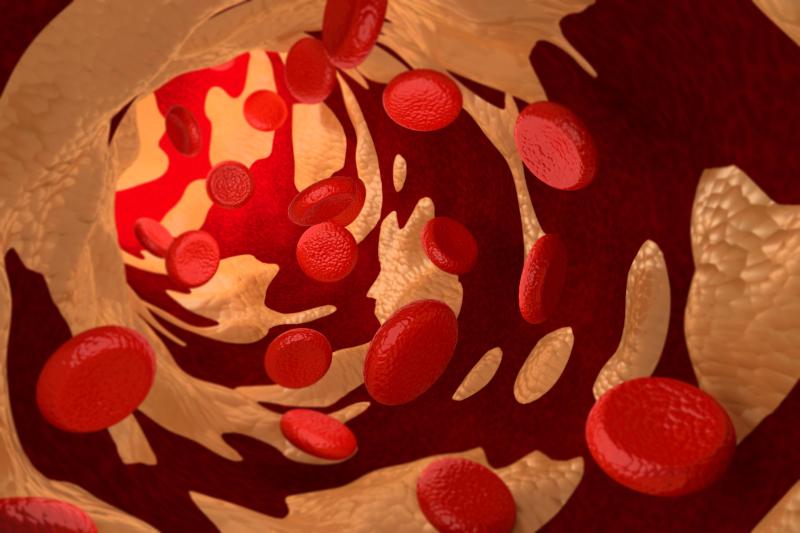 Stem cells have been found to be responsible for calcification in arteries of patients with chronic kidney disease
Stem cells have been found to be responsible for calcification in arteries of patients with chronic kidney diseaseAn elevated ratio between low- and high-density lipoprotein cholesterol (LDL-C/HDL-C) appears to increase the risk of new-onset diabetes, reports a new China study.
Researchers conducted a retrospective cohort study on 116,661 adults (mean age, 44.07±12.93 years; 53.8 percent male) who were free of diabetes upon enrolment. The main outcome of interest was the development of new-onset diabetes, defined as fasting plasma glucose (FPG) ≥7.0 mmol/L, self-reported diagnosis, or treatment with insulin or other agents.
Participants were categorized according to quartiles of LDL-C/HDL-C ratio, and the median value at baseline for the overall cohort was 1.9836. Those in the top quartile were older, more predominantly male, and were more commonly smokers. LDL-C and triglycerides were also higher in this class, while HDL-C was lower.
Over a median follow-up of 2.98 years, 2,681 new cases of diabetes were reported, yielding an incidence rate of 2.3 percent. The crude incidence rates increased from the lowest to the highest quartiles of LDL-C/HDL-C ratio: 0.31 percent, 0.43 percent, 0.68 percent, and 0.88 percent, respectively.
Fully adjusted Cox regression analysis showed that patients in the highest quartile of LDL-C/HDL-C ratio were nearly twice as likely as their first-quartile counterparts to develop new-onset diabetes (hazard ratio [HR], 1.92, 95 percent confidence interval [CI], 1.43–2.59). Those in the third quartile had more than a 40-percent risk excess (HR, 1.42, 95 percent CI, 1.07–1.90).
“To the best of our knowledge, this is the first study investigating the relationship between LDL-C/HDL-C ratio and new-onset diabetes risk in Chinese population. This longitudinal study clearly demonstrated that as the LDL-C/HDL-C ratio increased, the incidence of new-onset diabetes became gradually more pronounced,” researchers said.